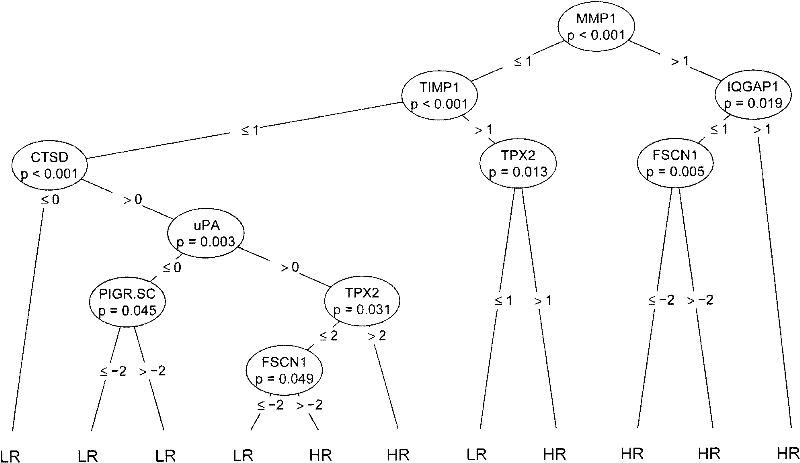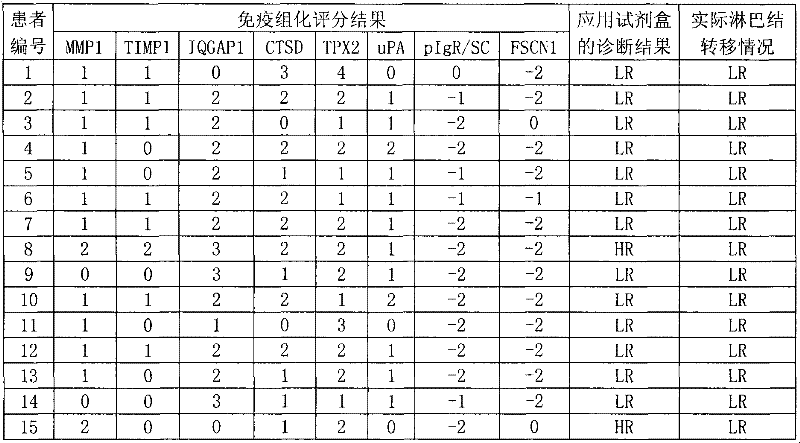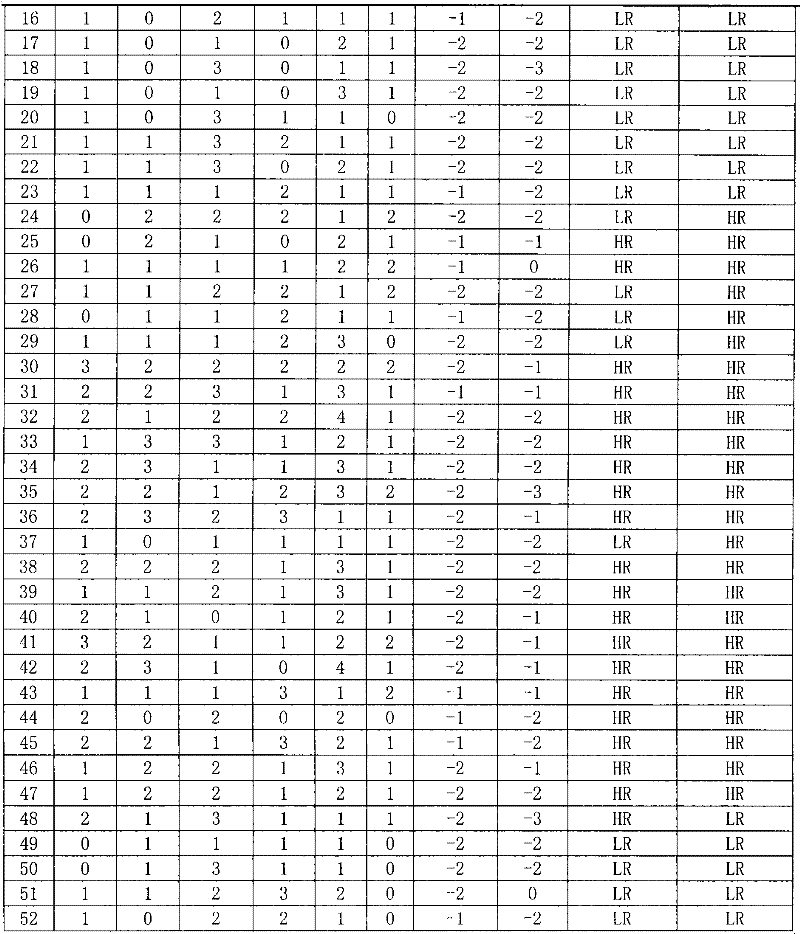Reagent for auxiliarily diagnosing lung cancer lymph node metastasis
A technology for lymph node metastasis and auxiliary diagnosis, applied in biological testing, material inspection products, measuring devices, etc., can solve the problems of low practicability and large clinical disconnection, and achieve increased usability, high reliability, and strong clinical use value Effect
- Summary
- Abstract
- Description
- Claims
- Application Information
AI Technical Summary
Problems solved by technology
Method used
Image
Examples
Embodiment 1
[0018] Embodiment 1, the development process of reagent
[0019] The training set contains 255 cases of lung cancer. Firstly, a set of lung cancer tissue microarray was constructed, and the immunohistochemical staining and result analysis of a total of 23 candidate lung cancer-related marker proteins were completed using tissue chips containing lung squamous cell carcinoma. On this basis, the generalized linear regression model (Generalized Linear Model, GLM) was used to study the relationship between the expression status of the above 23 candidate marker proteins in 319 primary tumor tissues of lung squamous cell carcinoma and lymph node metastasis. The results showed that among the 23 proteins, the expression levels of 9 proteins were significantly correlated with lymph node metastasis (p<0.05). Among them, TIMP1, MMP1, TPX2, Aurora-A, uPA, Osteopontin, and Cathepsin-D were positively correlated with lymph node metastasis—the stronger their expression in the primary tumor, ...
Embodiment 2
[0023] Embodiment 2, the composition of reagent
[0024] The reagent consists of eight antibodies packaged individually; all eight antibodies are purchased, as follows:
[0025] Anti-MMP1 antibody: produced by Oncogene, the product catalog number is MS-802-P, and the concentration used is 1:300.
[0026] Anti-TIMP1 antibody: produced by Santa Cruz, the product catalog number is sc-21734, and the concentration used is 1:50.
[0027] Anti-IQGAP1 antibody: produced by BD Biosciences, the product catalog number is 610612, and the used concentration is 1:100.
[0028] Anti-CTSD antibody: produced by Santa Cruz, the product catalog number is sc-10725, and the concentration used is 1:100.
[0029] Anti-TPX2 antibody: produced by Biolegene, the product catalog number is 628002, and the used concentration is 1:500.
[0030] Anti-uPA antibody: produced by Calbiochem, the product catalog number is 1M13L, and the used concentration is 1:100.
[0031] Anti-pIgR / SC antibody: produced by...
Embodiment 3
[0036] Embodiment 3, the application of reagent
[0037] 52 patients with squamous cell carcinoma of the lung (volunteers who gave informed consent), 24 of them were patients with lymph node metastasis, and 28 were patients without lymph node metastasis. Carry out immunohistochemistry to 52 routine lung squamous cell carcinoma patients with the reagent of embodiment 2 (each patient carries out immunohistochemistry with eight kinds of antibodies in the reagent respectively, and the experimental material of immunohistochemistry is the primary tumor tissue of patient's surgical resection slices).
[0038] Each antigen was scored according to the immunohistochemical results. Immunohistochemical scoring standard for cytoplasmic antigen: qualitative score of cell staining intensity + quantitative score of cell staining area = scoring result; qualitative score of cell staining intensity is: no staining = 0, mild staining = 1, moderate staining = 2, strong staining Staining=3; the q...
PUM
 Login to View More
Login to View More Abstract
Description
Claims
Application Information
 Login to View More
Login to View More - R&D
- Intellectual Property
- Life Sciences
- Materials
- Tech Scout
- Unparalleled Data Quality
- Higher Quality Content
- 60% Fewer Hallucinations
Browse by: Latest US Patents, China's latest patents, Technical Efficacy Thesaurus, Application Domain, Technology Topic, Popular Technical Reports.
© 2025 PatSnap. All rights reserved.Legal|Privacy policy|Modern Slavery Act Transparency Statement|Sitemap|About US| Contact US: help@patsnap.com



